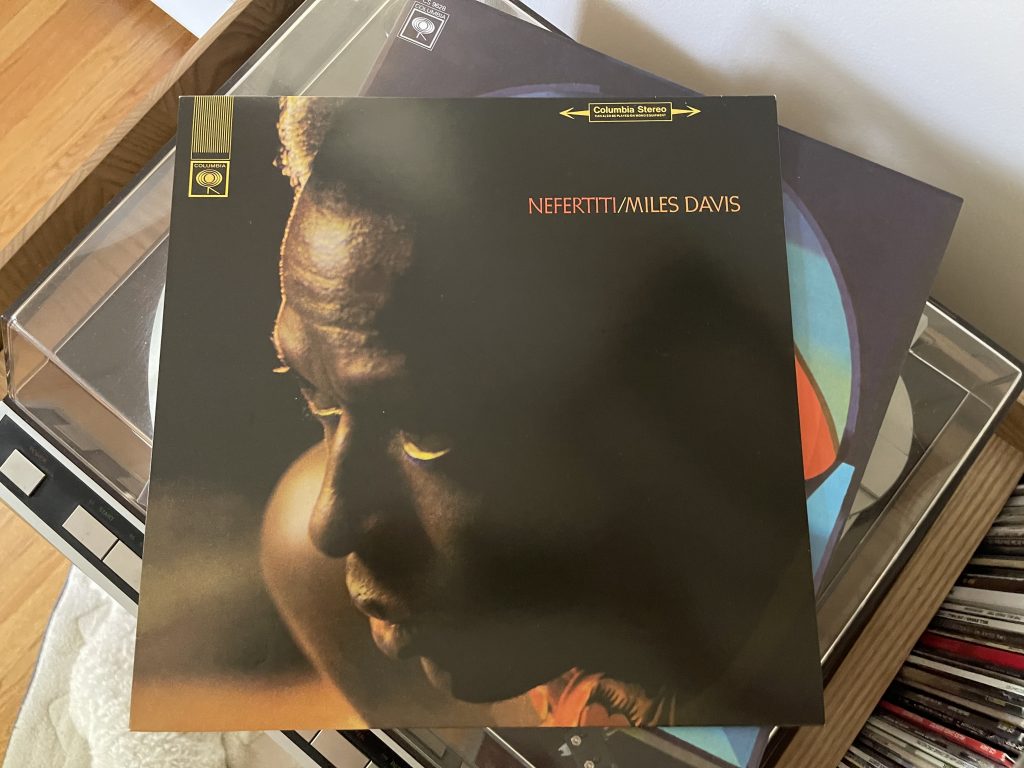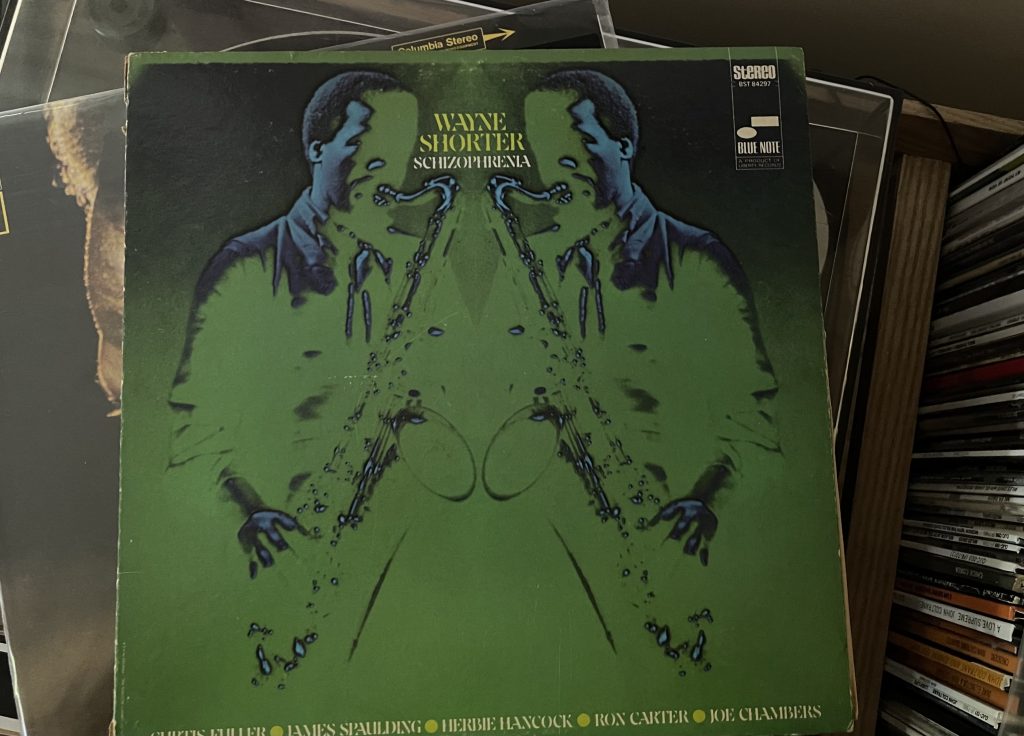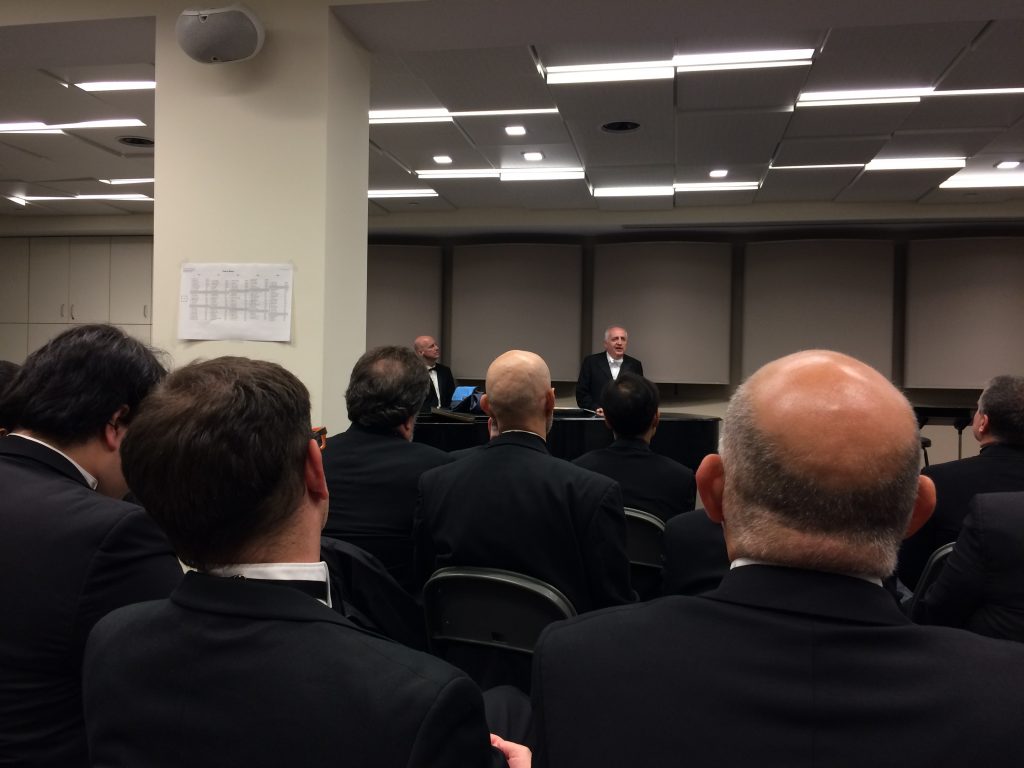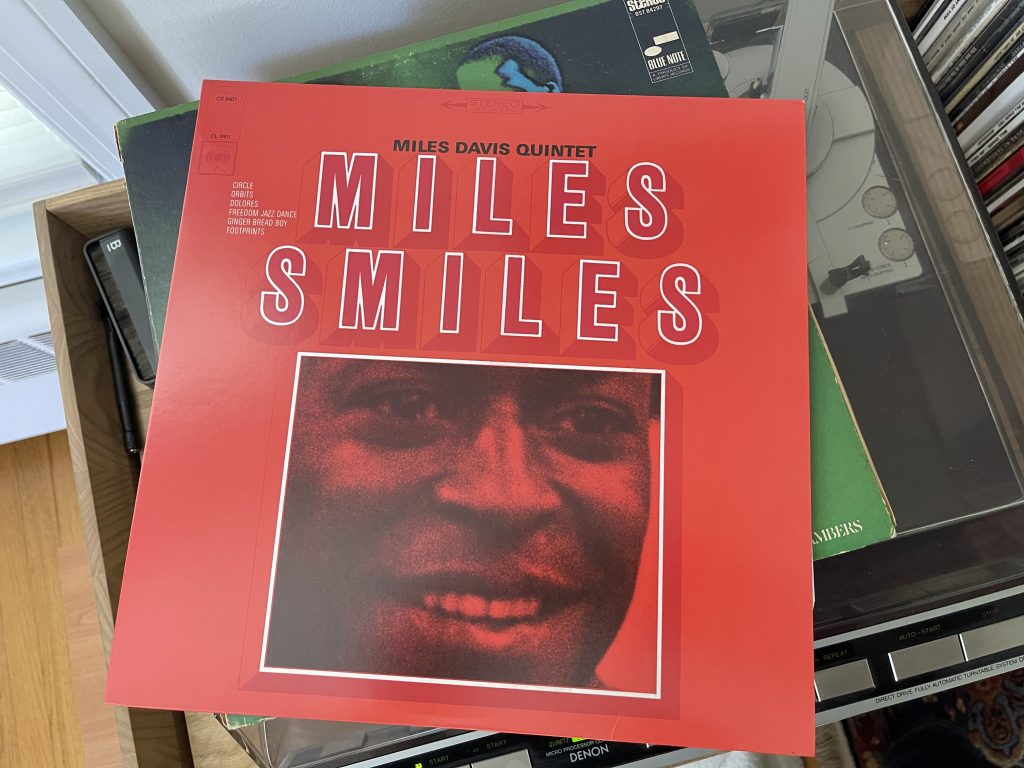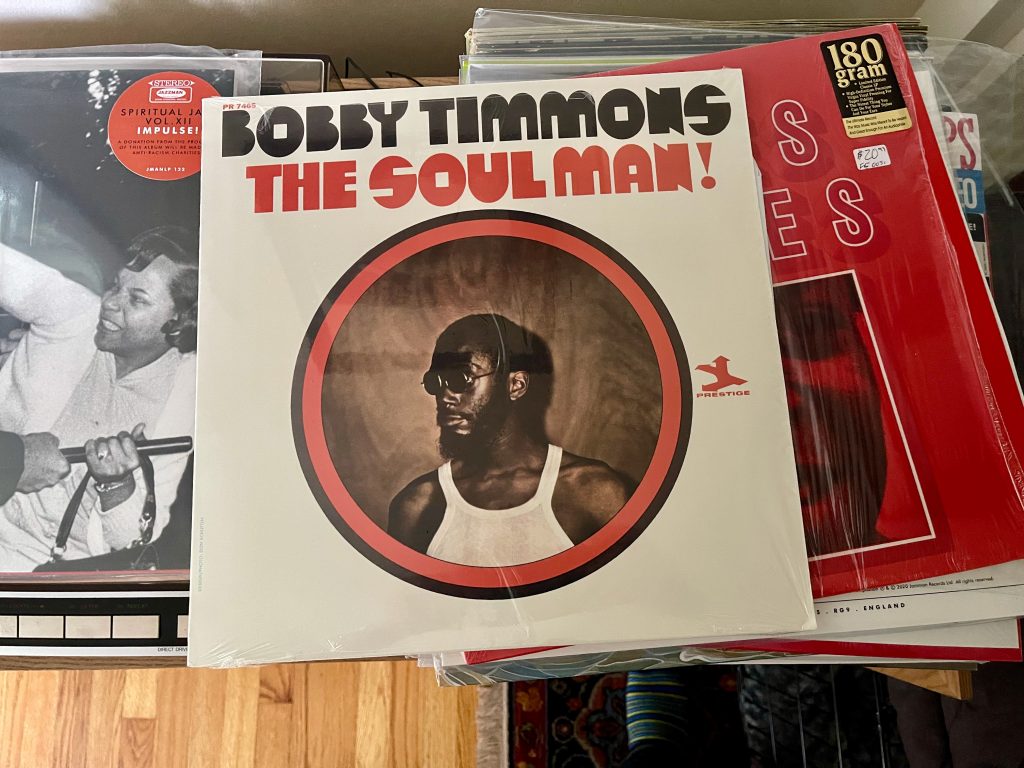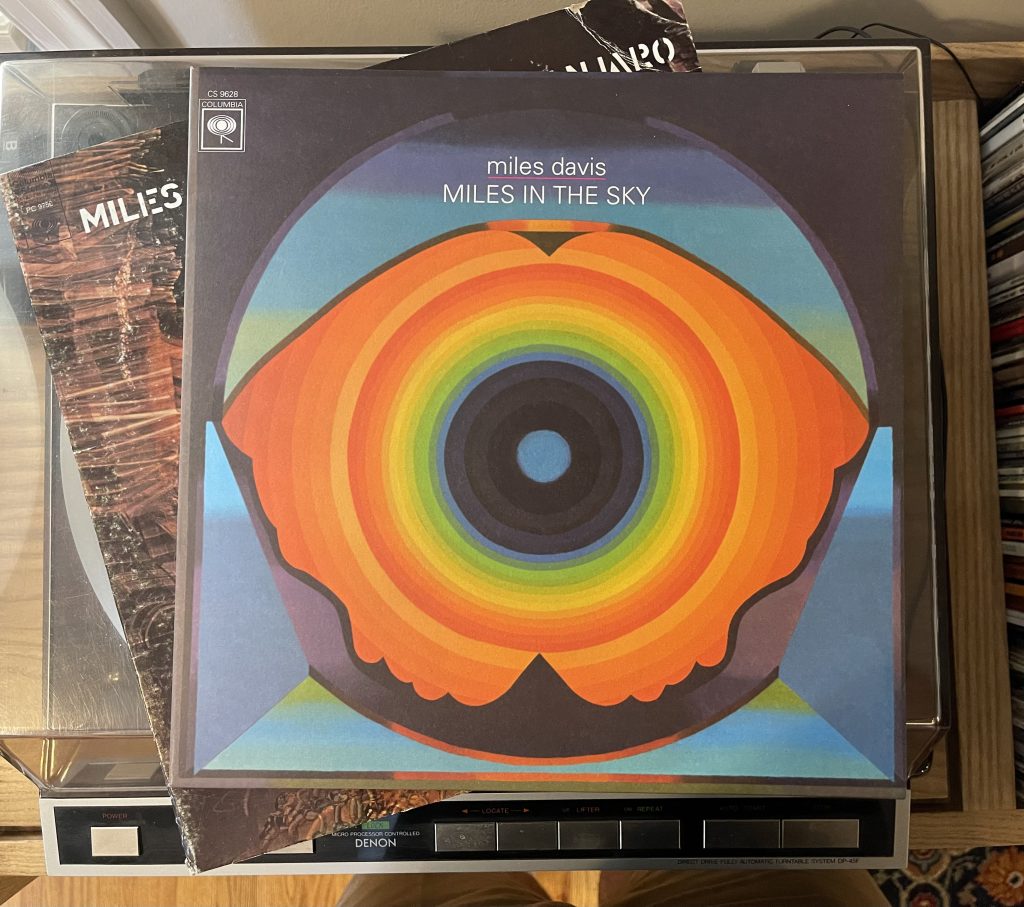
Album of the Week, July 30, 2022
Last time we checked in with Miles, he had spent weeks in the studio in June and July of 1967, following months of scattered recording sessions that produced other tracks, to record Nefertiti. Following the final July session which produced “Fall,” “Pinocchio” and “Riot,” the quintet took a break. They got back together for a series of European dates in October and November. But when they re-entered the Columbia Studio in December 1967 and January 1968, things were different, in a lot of ways.
First, the group that did the December 4 session, which recorded the track “Circle in the Round,” was a sextet, and the instrumentation was different. Herbie Hancock played the celeste instead of the piano, and Joe Beck joined the group on electric guitar. Beck returned for a session on December 28 that recorded a track called “Water on the Pond,” this time with Hancock on electric piano and harpsichord. A session followed on January 12 to record a song called, “Fun,” with Hancock still on electric harpsichord and Bucky Pizzarelli on electric guitar. (None of these tracks were released until years later.)
What sparked the change? It’s possible that Miles was explicitly influenced by rock music. He was clearly listening to it — he named Miles in the Sky as an homage to the Beatles’ “Lucy in the Sky with Diamonds.” But I think the changes in Hancock’s keyboards, which subsequent interviews with Hancock have made clear were at Miles’ instigation, show that Miles was sonically restless. He was looking for a new sound.
The next session of the group found them still recording with a guitarist; this time George Benson joined them on electric guitar, recording a track called “Paraphernalia.” The group recorded sporadically through January and February, and finally came back into the studio over three days in May, minus Benson, to record “Country Son,” “Black Comedy,” and “Stuff.” The first two featured the traditional instrumentation, while “Stuff” had Herbie Hancock on electric piano and Ron Carter on electric bass.
It’s this track that opens Miles in the Sky, the album eventually released from this string of sessions. And it’s a radical difference from what came before, sonically and compositionally. The Miles-composed tune, while still in a minor mode, is a much more accessible, even funky composition. And Hancock’s Fender Rhodes is the sonic ingredient around which the rest of the band gels. (I’ve written and put a mix together about the sounds Herbie could get out of that Fender Rhodes.) But there are unguessed depths in the track, and the genius of “Stuff” is the fluency with which it veers from straightahead funk that wouldn’t be out of place on some of Herbie Hancock’s early 1970s albums to timeless oceanic jazz and back.
The secret is that Fender Rhodes. Herbie has said, “One thing I liked about the Fender Rhodes electric piano: the drummer didn’t have to play soft for me, he could play loud and I could turn the volume up.” But there’s way more than just volume going on with what he does with “Stuff.” At the end of each chorus, there is a section taken out of time where you can hear the chords of the Rhodes going up and down a chromatic progression, and it sounds a little like outer space—even coming out of his own solo, which reminds the listener that this was the guy who wrote “Watermelon Man.” Miles’s solo grooves in a way that he hadn’t done in a long time, but Wayne Shorter’s solo locates more firmly in the free jazz of the preceding few albums. Ron Carter’s bass provides a constant heartbeat throughout, as Tony Williams’ drum patterns explore and float free under the horns. In a different world, with a different sax player, “Stuff” might tilt all the way over into James Brown flavored R&B. But this is thinking funk, and it’s all the more remarkable for that.
“Paraphernalia,” written by Wayne Shorter, is the sole track on the album on which an electric guitar appears, courtesy of George Benson. You’d be forgiven for being underwhelmed. Benson’s role is mostly rhythm and texture, providing some of the crunch that the Fender Rhodes provided on “Stuff.” But it’s a novel ingredient in the sound, and it prompts a different approach from the players on what might otherwise have fit nicely alongside the tracks on Nefertiti. In particular, Carter locks in with Benson’s groove, leaving Williams free to pulse and explode throughout. During Benson’s brief solo, the piano drops out, leaving a guitar trio with bass and drums that wouldn’t be out of place on a Wes Montgomery album—until those horns bring back the transitional chords again. Shorter’s composition borrows the trick he used on Nefertiti of keeping the space for solos wide open but contained with frequent repetition of the chorus. As a result, the track feels like an exercise in synchronicity, with seemingly diverse approaches and ideas coming together in one briskly simmering pot. Or something.
Tony Williams’ composition “Black Comedy” opens side two, and is a more straightforward tune. But it’s a burner, and Wayne Shorter’s solo finds the core of the stuttering, stopping and starting melody. In fact, on both this track and Miles’ closer “Country Son,” the band seems to double in intensity. On the former, the core chord progressions keep coming back to raise the temperature of the band. “Country Son” seems to start in the middle of something (and may have been a segment of an extended jam), with the band coming in on a white hot tidal wave of sound, led by Miles’ muted trumpet. We haven’t heard Miles lean into the mute in many records, as that approach was largely left behind by the time the second quintet started, but here it’s back in force above a volcano of sound from Tony Williams. Then Miles seems to call the band to pause as he surveys the landscape, and they shift gear into a vibrant, swinging melody, led by Wayne Shorter’s sax. There’s another shift as Herbie Hancock takes the solo in a sort of gnomic piano trio, with flavors of Latin jazz, funk, and free jazz all coming together, shifting from one to the other at the drop of a hat. There was real telepathy among the rhythm section of the quintet, and hearing them exercise it here is remarkable. When Miles comes back, sans mute, the final statement of the theme is made over that Latin-flavored counter-melody. And there’s just a little taste of a melody that we’ll hear in earnest in a few weeks.
Miles wasn’t done recording after these sessions. The group was back in the studio four days after the final session for Miles in the Sky and would be there through the end of June. We’ll hear the fruits of those recordings, and the next big change in Miles’ group, next time.
You can hear all of Miles in the Sky here:

